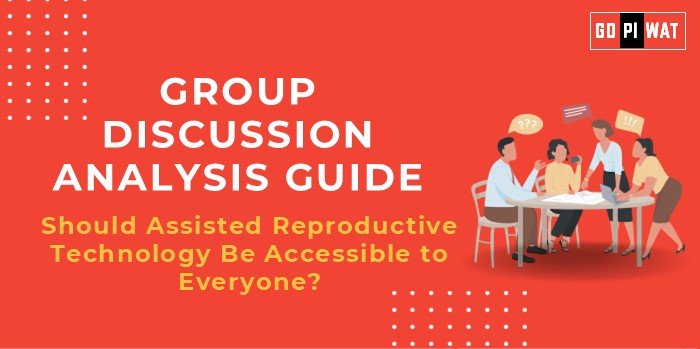📋 Group Discussion Analysis Guide: Should Assisted Reproductive Technology Be Accessible to Everyone?
🌐 Introduction to Assisted Reproductive Technology (ART)
Opening Context: “In a world witnessing rapid advancements in healthcare, Assisted Reproductive Technology (ART) offers hope to countless individuals struggling with infertility, but questions around its accessibility and equity persist.”
Topic Background: ART encompasses treatments like IVF and IUI, designed to assist individuals and couples in overcoming reproductive challenges. With the global fertility rate declining, the significance of ART has grown, yet disparities in access raise ethical, financial, and social questions.
📊 Quick Facts and Key Statistics
- 🌍 Global ART Use: Over 8 million babies have been born worldwide through ART, showcasing its transformative potential (Source: WHO).
- 💰 Cost of IVF: Average cost ranges from $10,000–$15,000 per cycle, making it unaffordable for many (Source: International Fertility Society).
- 👨👩👧 Infertility Prevalence: 1 in 6 couples globally face infertility issues (Source: WHO, 2023).
- 🇩🇰 Country Comparison: ART treatments are subsidized in countries like Denmark, but remain largely private in nations like India and the US.
👥 Stakeholders and Their Roles
- 🏥 Healthcare Providers: Deliver ART treatments; innovate through research.
- 🏛️ Government Bodies: Regulate and subsidize ART to ensure equitable access.
- 📢 Patients and Advocacy Groups: Raise awareness and advocate for affordable ART.
- 💳 Insurance Companies: Offer or deny coverage for ART treatments, impacting affordability.
🏆 Achievements and Challenges
Achievements:
- ⚙️ Medical Advancements: Increased ART success rates; 32% in IVF under age 35.
- 🌈 Inclusivity in Policies: Countries like Sweden offer ART to same-sex couples and single parents.
- 🌍 Global Awareness: WHO recognizes infertility as a public health issue.
Challenges:
- 💰 High Costs: Out of reach for lower-income individuals.
- ⚖️ Ethical Dilemmas: Concerns over embryo selection and surrogacy.
- 📍 Limited Access: Geographic disparities, especially in rural areas.
🌏 Global Comparisons:
- 🇩🇰 Denmark: Publicly funded ART reduces financial barriers.
- 🇺🇸 US: ART often remains exclusive to high-income groups due to lack of subsidies.
📖 Case Study:
India: ART regulation enacted in 2021 to improve service quality, yet affordability remains a hurdle.
📚 Structured Arguments for Discussion
- ✅ Supporting Stance: “ART should be universally accessible as infertility is a recognized medical condition deserving equal treatment opportunities.”
- ❌ Opposing Stance: “Limited resources should prioritize critical healthcare needs over elective procedures like ART.”
- ⚖️ Balanced Perspective: “While ART accessibility is crucial, it must be weighed against healthcare resource allocation and ethical considerations.”
🎯 Effective Discussion Approaches
- 💡 Opening Approaches:
- Statistic: “1 in 6 couples face infertility globally, yet most lack access to treatment.”
- Ethical angle: “Infertility is as emotionally taxing as chronic illness. Should treatment be limited to the wealthy?”
- 🛠️ Counter-Argument Handling:
- Acknowledge high costs, propose tiered subsidy models.
- Emphasize the mental health impact of infertility to highlight ART’s importance.
🔍 Strategic Analysis of Strengths and Weaknesses
Strengths:
- 👶 Empowers families.
- 🚫 Reduces stigma around infertility.
- 📉 Supports declining fertility rates.
Weaknesses:
- 💸 High cost of treatments.
- ⚖️ Ethical debates.
- 🔗 Technology dependence.
Opportunities:
- 🧪 Innovations in low-cost ART solutions.
- 🤝 Public-private partnerships to improve accessibility.
Threats:
- 🛑 Socio-religious opposition.
- ⚠️ Unregulated private clinics.
🎓 Connecting with B-School Applications
- 🌟 Real-World Applications: Potential for healthcare entrepreneurship in low-cost ART solutions.
- ❓ Sample Interview Questions:
- “How would you address ethical concerns in ART practices?”
- “What role can businesses play in making ART more accessible?”
- 📘 Insights for B-School Students: Explore ART’s economic, ethical, and regulatory frameworks for projects or case studies.


